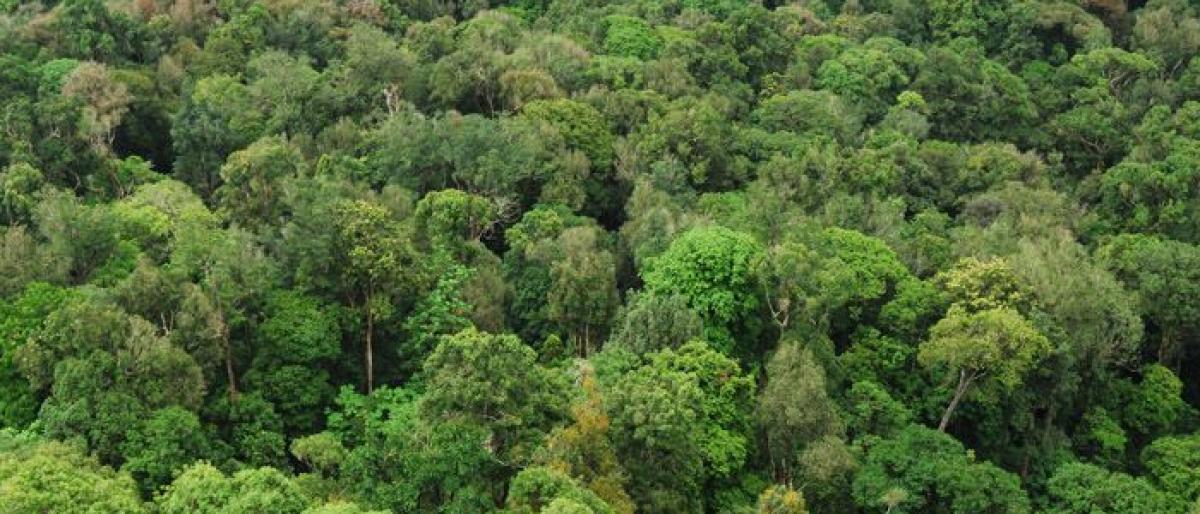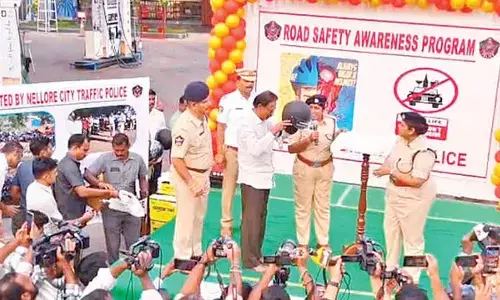Tamil Nadu’s innovative methods of seed plantation

While the percentage of forest cover all over the world is 306, Indias forest and tree cover has been assessed to be 2439 per cent, consisting of 6,778 sq km of forest cover and 1,243 sqkm of tree cover An analysis of Indian forest cover reveals that 299 per cent is very dense forest, 918 per cent is moderately dense forest and the remainder is open and scrub forest
While the percentage of forest cover all over the world is 30.6, India’s forest and tree cover has been assessed to be 24.39 per cent, consisting of 6,778 sq km of forest cover and 1,243 sq.km of tree cover. An analysis of Indian forest cover reveals that 2.99 per cent is ‘very dense forest’, 9.18 per cent is ‘moderately dense forest’ and the remainder is ‘open and scrub forest’.
However, both, experts of forestry as well as India’s National Forest Policy state that a country should have at least one-third or 33 per cent of its land area under forests for ecological sustainability.
India has made efforts to achieve the target of 33 per cent. But an explosion of its population as well as human activities such as urbanisation, industrial and agricultural expansion, dam building and road laying mean that achieving it is going to be very difficult, if not impossible. Consequently, in many areas, increasing the tree cover in addition to protecting forest cover has now taken priority. Many schemes are afoot to increase tree cover by planting trees in waste and barren lands with the consent of the owners concerned.
In this context, Tamil Nadu has experimented with a number of ideas. In order to encourage tree cultivation outside forests, ‘Tree Cultivation in Private Lands’ or TCPL was implemented in the State from 2007-08 to 2011-12, which is the first effort of its kind in the country.
An amount of Rs 56.96 crore was sanctioned under State funds from 2007-08 to 2011-12. It was implemented by carrying out block planting and inter-crop planting during 2007-08, by carrying out block planting during 2008-09 and 2010-11 and free supply of profitable timber species for planting in the bunds. During 2011-12, block planting was carried out by planting profitable timber species like teak and Casuarina species in farmers' lands.
The State has especially introduced new ways to sow seeds in order to ensure maximum chances of survival. In recent years, the technique of “seed ball” sowing has picked up in Tamil Nadu. Although it is an ancient technique that has roots in antiquity — seed ball sowing was in use in Ancient Egypt, on farms, after the annual flooding of the Nile — it has become familiar after it was rediscovered by the Japanese natural farming pioneer, Masanobu Fukuoka.
Seed balling was first carried out in Tamil Nadu in 1987. At the time, aerial seeding of pellets was carried out by using pellets. The seeds were inserted inside earthen balls, the size of a plum. It was considered to be a modern technique of creating green cover and it yielded good results. The seed ball sowing method is also considered to be more cost-effective when compared with other methods.
In August this year, the technique was used again, in the State’s Tiruchirapalli Forest Division. Seed balls, the size of an ‘Amla’ or Indian gooseberry, were prepared from a mixture of red soil, cow dung, cow urine and compost. Seeds of tree species such as Indian Beach, East Indian Walnut, Margosa, Indian Cherry, Peepul, Banyan, Custard Apple and tamarind were inserted in the earthen balls. The semi-solid balls were shade-dried initially and then allowed to dry in the hot sun for some time. They were then sown in the Tiruchi Forest Range and on the Perumal Malai hills, a revenue hill located near Thuraiyur.
In addition to Tamil Nadu, seed balling is being followed successfully in other southern States like Telangana, Karnataka and Andhra Pradesh. The Indian government should also promote this method. Other seed sowing methods used or being used in Tamil Nadu include the transplantation method, the direct sowing method and the pre-treated seeds method.
In the transplantation method, six months to one-year-old seedlings are raised in the nursery and transplanted in pits of varying sizes of 0.45 cm to 1.00 m, depending on the size of the seedlings. In case of Teak, the seedlings are raised in the nursery and stumps are prepared by removing the adventitious roots and clipping at the collar level. Then, these stumps are planted during the monsoon in crowbar holes. This is called the stump planting method. In Tamil Nadu, this system of planting of Teak was followed in the past. Presently, this method of planting is followed in Andhra Pradesh.
Direct sowing of seeds is also done. But the method depends on the tree species. In case of Wattle, a type of Acacia, the direct sowing of pre-treated seeds was followed in the past in the Nilgiris district. As of now, this system has been abandoned as wattle is considered to be an exotic species in India. Pre-treated seeds were sown in holes made by sticks also in the past. A notable practitioner of this method was the famous England-born Indian Forest Service Officer Hugo Francis Andrew Wood.
He planted teak seeds in the holes made by his silver-tipped walking stick at Topslip, presently part of the Anamalai Tiger Reserve in Tamil Nadu from 1918 to 1926. He lies buried among the Teak trees that he planted, with a Latin inscription on his tomb that reads “Si monumentum requires circumspice”, meaning “If you want to see me, please look around”.
- V Sundararaju
(Courtesy: Down to Earth. The author is President, the Society for Conservation of Nature, Trichy, Tamil Nadu and consultant with the Society for Social Forest Research & Development, Tamil Nadu).


















